56 F. high on Sunday in the Twin Cities.
61 F. average high for April 22.
45 F. high temperature on April 22, 2012.
.03" rain fell Sunday at MSP International Airport.
Paul Douglas on MSNBC? What can possibly go wrong - details below the 7-Day.
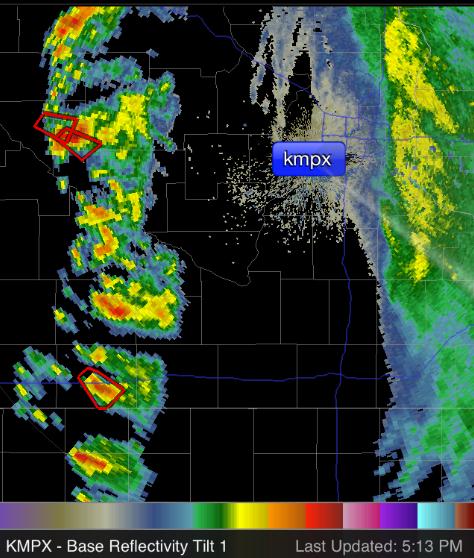 Tornadoes And 6" Snow On The Same Day, In The Same State?
Tornadoes And 6" Snow On The Same Day, In The Same State? Saturday was meteorologically bizarre. Details below.
 Hints Of May (and March)
Hints Of May (and March). Expect a warming trend into midweek, low 70s possible Tuesday and Wednesday. A cooler front knocks highs back into the low 50s the latter half of the week, a slight risk of frost for the outlying suburbs if skies clear next weekend (which seems doubtful right now). Graphic courtesy of Iowa State.
Thinking The Unthinkable. "
On Nov. 12, 2005, a storm that spawned several tornadoes passed through Iowa State’s campus and football field at Jack Trice Stadium. The severe weather struck shortly before the Cyclones played the Colorado Buffaloes." - from an article at The Des Moines Register below, asking a terrifying rhetorical question: what would happen if a large, violent tornado approached a venue (ballpark or mall) where thousands or tens of thousands of people are gathered?
"
These are beautiful and wonderful phenomenon," she said, "and I can understand everyone wanting to get a look at it. But to put yourself in danger like that, and to put others in danger, is just bad." - from a story below about the safety perils of chasing tornadoes. Photo courtesy of WeatherNation TV meteorologist Aaron Shaffer.
69,985 warm weather records during the last year, nationwide. Source: NOAA
NCDC.
19,195 cold weather records during the last 365 days.
* NCDC has a (long) list of all the warm weather records set in March
here.
Amazing But True. The following locations (above) observed daily LOW temperatures that were warmer than the previous record HIGH temperature for that day. Source:
NCDC.
"
God has given you one face, and you make yourself another." - William Shakespeare (Photo:
LM Preston).
What Spring? Check out the Saturday images from Tami Sallis up in Hibbing, where 1-3" slush fell. 5.8" of snow shocked folks up near Orr. I have a hunch residents of Minnesota's Iron Range are quickly losing their quirky sense of humor. Good grief.
A Tale Of 3 Seasons. A nearly 30-degree temperatures spread across Minnesota Saturday whipped up powerful winds; the atmosphere over far western Minnesota just unstable enough with 60-degree sun for a few tornadic storms. I counted at least 6 separate tornadoes Saturday (no tornado watch was posted ahead of time, as far as I can tell). Meanwhile the same stubborn storm was squeezing out heavy wet snow over the Iron Range, nearly 6" up at Orr! Thanks to the
San Diego office of the National Weather Service for making this interactive tool available.

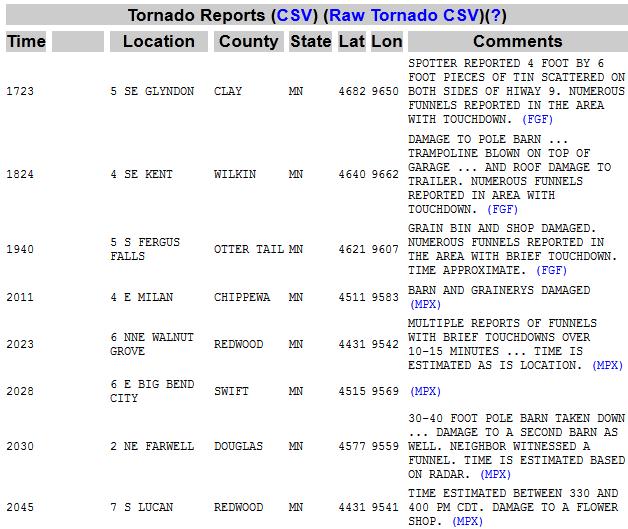 Saturday Tornado Details
Saturday Tornado Details. Here is more information about Saturday's (freak) tornadoes over western Minnesota from SPC, the
Storm Prediction Center.
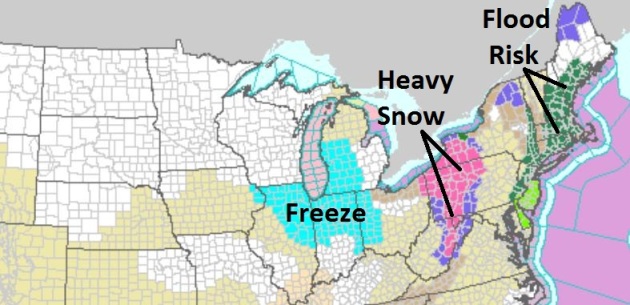 Winter Relapse
Winter Relapse. NOAA's
National Watch/Warning/Advisory map as of Sunday evening showed flood watches for much of New England, winter storm warnings for western PA, Maryland and New York State, with freeze warnings post from Rockford and Chicago to Toledo.

 Very Plowable
Very Plowable. Good grief - up to 16" for the Buffalo area by Tuesday morning? Lake effect in late April? Now I've officially seen everything.
Databank:
11 years of the 21st century have been among the warmest 13 years on record, according to NOAA.
395 parts per million: concentration of carbon dioxide currently in the atmosphere.
280 parts per million: estimates of CO2 concentrations before the Industrial Revolution, in the last 19th century.
"
Global warming is not a linear process. Regional variations and natural phenomena like El Nino or the North Atlantic Oscillation sometimes create the impression that temperatures are cooling. However, on a long-term graph, there is clearly a warming trend. A new study by the British Climatic Research Unit integrating missing measurements from the Arctic also indicates that 2005 and 2008 were in fact both warmer than 1998." - from a story about skeptical science at Germany's Deutsche Welle.
"
Species are straying from their native habitats at an unprecedented rate: 11 miles (17.6 km) toward the poles per decade. Areas where temperature is increasing the most show the most straying by native organisms. The Cetti's warbler, for example, has moved north over the last two decades by more than 90 miles (150 km)." - excerpt from a Live Science article below. Photo:
rspb.org.
"
Unfortunately, NOAA’s greenhouse gas monitoring program has been cut back by Congress in recent years, Lehman said. “Even if we lack the will to regulate emissions, the public has a right to know what is happening to our atmosphere. Sticking our heads in the sand is not a sound strategy,” he said." - from a Summit County Citizens Voice article on threats to greenhouse gas monitoring below. Graph above: NOAA.
"
Probably the most serious and urgent challenge faced by the physical world now is the threat of climate change," he added. "This will disproportionately affect those in poorer countries, for it is there that climate extremes will be most severe and where there is little capability to adapt to them." - from an article at The Christian Post below.
"
A recent study suggests the devastating and deadly Russian heat wave of 2010 was made three times more likely because of global warming caused by human activity."
Quote from climate scientist Heidi Cullen at Princeton's Climate Central, in a Daily Beast article below.
More On Last Friday's Softball-Size Hail In South Texas. Details from the
Brownsville, Texas office of the National Weather Service: "
Recap of Friday’s “Round 2″ for mid Valley Hailstorms: The biggest difference between March 29th and yesterday (April 20th) was the fast motion of the storms and the amount of dry air in the atmosphere. Video, photo, and anecdotal evidence indicated far few stones driven by much less wind, only lasting for minutes (vs. nearly an hour on the 29th). No hail drifts this go-round, and no life threatening flooding, either, as heaviest rainfall was highly localized with Raymondville taking top accumulation. Reports from Emergency Management partners indicated significantly less damage, particularly to homes and businesses. Still, a storm of note and perhaps of record, as shown by these softball (~4.5 inch diameter) stones courtesy of Mr. John Letney, a weather enthusiast and amateur radio operator from the Laredo area who happened to be in the hail core. Wow."
Storm-Chasing "Morons" Hinder Rescues. As tornado-chasing becomes more popular you knew this was going to happen.
The Portland Press Herald has more details: "
KANSAS CITY, Mo. - Given life-threatening wind, hail, lightning and flying debris, chasing tornadoes would seem harrowing enough. Now add to that what many agree is a new and growing danger on the edge of the violent vortexes: people -- hundreds and hundreds of regular people. People risking their lives, gawkers clogging roadways, some with kids in the backseats of their cars or in the beds of their pickups. They sit poised with cellphone cameras, stop dead in the middle of lanes beneath roadway bridges, travel at breakneck speeds for the chance to get up close and personal with one of nature's most awesome and awful displays."
A Reluctant Spring At Yosemite. More details from Yosemite National Park, via
Facebook: "
Crews plowing the Tioga Road have reached Yosemite Creek and are seeing below-average snow amounts. Snow depths are up to three to five feet. Despite the below-average snowpack, full avalanche precautions are still in place. There is no estimated opening date for the Tioga Road. (The Glacier Point Road opens for the season at 5 pm today.)"
Reviewing The St. Louis April 22, 2011 Good Friday Tornadoes. Details from the
St. Louis office of The National Weather Service: "
Two tornadic supercells crossed the St. Louis Warning Area during the afternoon and evening hours of Good Friday, April 22, 2011. The northern most supercell spawned an EF-4 tornado that ripped a 21 mile path of destruction across St. Louis County in Missouri and Madison County in Illinois. Municipalities that were affected include Maryland Heights, Bridgeton, St. Ann, Edmundson, Lambert St. Louis International Airport (City of St. Louis), Berkeley, Ferguson, and Pontoon Beach/Granite City. Remarkably, there were no fatalities with this event. This can be attributed to the 34 minutes of tornado warning lead time, wall to wall media coverage, and the actions of those in the direct path of the tornado."
When Severe Weather Strikes, Would You Know How To Evacuate Public Spaces? It's one of our biggest nightmares: an EF-3 tornado stream-rolling toward Target Field (which has its own dedicated meteorologist - Craig Edwards - keeping an eye on Doppler) or MOA, or any other venue with thousands or tens of thousands of people clustered in one place. Do these ballparks (and malls) have evacuation plans? Where would people even be able to find shelter from 100-150 mph winds?
The Des Moines Register has a thought-provoking article; here's an excerpt: "
Weather reports showed strong storms and the possibility of tornadoes headed toward Des Moines last Saturday night, and Bob Swanson, head of security at the Iowa Events Center, wanted his staff prepared. The Iowa Barnstormers arena football team was playing that night. He called a morning meeting to make sure everyone was up to speed on evacuation procedures, nearby tornado shelters and crowd management if things got rough. That night, though, as with many emergencies, circumstances threw a curveball: The fire alarm went off, and an automated public address message told fans to head for the exits — just as the teeth of a thunderstorm and damaging high winds bore down on the capital city."
Housing Solution For The Next Natural Disaster? House In A Box, Maybe. Here's an intriguing story (and concept) from AP and
The Star Tribune: "
NEW ORLEANS - In one of the neighborhoods hit hardest by flooding in Hurricane Katrina's aftermath, developers have built a prototype house that's aimed at providing a quick housing solution for areas blown away by hurricanes and tornadoes or knocked down by earthquakes. The dwelling in the Lakeview section of New Orleans is somewhat box-like, with a roof that slants inward and an arched structure in front that forms a covered front porch. But style isn't the purpose of the house that's meant to go up quickly after disasters and then serve as permanent housing that can withstand future calamities. It's designed to be environmentally friendly, survive outside damaged utility grids and can be shipped in pieces in a single container and assembled like an erector set."
"We Are Vermont." How to prepare for a flood beyond the scope any of us can imagine? Here are some suggestions at
Times Argus Online: "....
Describing the goals of a “flood resilience” strategy is relatively easy. Flood resilience is first and foremost about minimizing flood damage to our communities. It means protecting our roads and buildings from being washed away. Being resilient means that we have designed our communities to ensure that no one will be swept downstream or stranded by high waters, and that basic health and public safety protections will remain in place.
This kind of resilience requires planning, foresight and careful attention to a host of issues including the role of our natural environment in minimizing flood damage.Everything on the Vermont landscape is connected. Every action we take on the land and in the rivers has a reaction."
 Seattle Sunrise
Seattle Sunrise. Thanks to the Seattle office of the National Weather Service for a picture-postcard-perfect sunrise pic.
The Winning Streak: HBO And The Future Of Pay-TV. Here's a terrific article from
The Economist: "
HBO turned over $4 billion in 2010, estimates SNL Kagan, a research outfit. The previous year it accounted for one-quarter of the operating profit of its parent, Time Warner (which made $4.5 billion in all). Because the media conglomerate, once the world’s biggest, has slimmed down, and some of its businesses, such as magazines and DVDs, have been hit by the downturn, HBO has never looked more important to it. But things are getting tougher. HBO is assailed by competition from old-media peers and new-media upstarts. The pay-TV ecosystem on which it depends is ailing. The way HBO responds to these pressures will shape the television business for years. The outfit that changed the kind of television people watch is poised to determine how they watch it."
How Social Media Is Taking Over The News Industry. Over the last few months I've discovered how good Twitter (and by extension "Flipboard") are at covering breaking news. No, I don't care what Mr. Smith had for breakfast, but if you choose who you follow on Twitter carefully, specific people (experts in certain fields) and organizations, you can get the news you need long before the networks.
Mashable has an interesting article; here's an excerpt: "
More than ever, people are using Twitter, Facebook and other social media sources to learn about what’s happening in the world as traditional news outlets become increasingly less relevant to the digital generation. American forces’ raid on Osama Bin Laden, Whitney Houston‘s death, the Hudson River plane landing — these are just a few of many major news stories ordinary citizens broke on Twitter first. Professional journalists, meanwhile, use Twitter all the time to break news quickly before writing up full articles. And the business side is going digital too. Online news now generates more revenue than print newspapers."
Apple iPhone 5 To Be Cased "In Liquidmetal?" Details from the U.K.
Telegraph: "
The iPhone 5, likely to be released later this year, is expected to be cased in a ‘metallic glass’, otherwise known as Liquidmetal, says a Korean news outlet citing ‘industry sources’. The case is expected to be 20 times stronger than the current encasement. According to The Register, ‘metallic glass is a metal alloy, but one with the disordered structure of glass’. The material has been around since the 1990s, but since a new breakthrough in ‘superspeed pulse mould technology’, this type of glass, which is as tough as metal, can now be used for phone casings. An Apple spokesman declined to comment on rumours and speculation."(full disclosure: I own Apple stock, and wish I could buy more at these prices...)
* more (pure) speculation on the upcoming (October?) release of the iPhone 5 from
eWeek.com.
* photo above courtesy of
cultofmac.com, which has even more speculation about the iPhone 5.
 A Lovely Weekend....For Ducks
A Lovely Weekend....For Ducks. Thanks to Joan Kruhoeffer for the Norman Rockwell-esque family of ducks.

 A Stinker Of A Weekend
A Stinker Of A Weekend. Yes, we need the rain. But it would sure be nice if Mother Nature cooperated and scheduled puddles for weekdays. I'm working on that. Under a gray, showery, unsettled sky highs ranged from 51 at Redwood Falls to 53 St. Cloud, 56 Twin
Cities and 59 at Eau Claire.
Double Rainbow. Thanks to Marlo Lundy for capturing an amazing shot of a double rainbow (white sunlight being refracted/bent twice within raindrops) in central Iowa. Good work Marlo!
Paul's Conservation Minnesota Outlook for the Twin Cities and all of Minnesota:
TODAY: Sunny and beautiful. Winds: W 8-13. High: 65
MONDAY NIGHT: Clear and cool. Low: 49
TUESDAY: Fading sun, warmer. Clouds increase by late PM. High: 76
TUESDAY NIGHT: T-storms, some strong. Low: 57
WEDNESDAY: Showers and a few strong T-storms. Drying out late in the day. High: 67
THURSDAY: Sunny, turning breezy and cooler again. Low: 42. High: 53
FRIDAY: Frost up north? Plenty of blue sky. Low: 38. High: 55
SATURDAY: Gray and unsettled. Showers likely. Winds: NE 10. Low: 43. High: 54
SUNDAY: Slightly drier. Mostly cloudy and damp with a stray shower. Winds: SE 10. Low: 45. High: 58

A Tale of 3 Seasons
I like a rainy day. It helps me savor a bad mood. Yes, the weekend was foul, with more baffling extremes. Saturday brought nearly 6 inches of snow to Orr, Minnesota. Plowable. The sun came out over western Minnesota, enough blue sky for 60s, leaving the atmosphere unstable and volatile. Six tornadoes touched down from Kent to Milan; mostly minor damage reported. Here's a rare example of twisters forming suddenly; no tornado watch issued in advance.
What happened? The stronger the contrast in temperature, the faster winds have to blow. Some of this wind "shear" focused spin around a vertical axis - forming small, rotating "supercell" thunderstorms. Very odd.
Storms, given a choice, PREFER to come on weekends. Now that it's Monday, and we're hiding in our cubicles and classrooms, now, on cue, a staggeringly nice day unfolds - enough sun for mid 60s. 70s return Tuesday, along with late-day thunder. Showers and a few strong T-storms Wednesday give way to a cooler front by late week. I think we'll avoid a frost in the metro area, but keep a light jacket handy.
Next weekend? How 'bout those Twins! Showers are likely Saturday; a bit drier on Sunday. 70s return the first week of May.
Climate Stories....
Adventures On MSNBC. Saturday morning I made an appearance on the "UP with Chris Hayes Show" on
MSNBC. I Skyped from the weather center at my alma mater, Penn State. The topic was bad hair, no - climate change. That's right. Details: "
Meteorologist Paul Douglas joins the conversation on climate change - along with former New Jersey Gov. Christine Todd Whitman, podcast host Sam Seder, Victoria deFrancesco Soto of Latino Decisions, and former New York Times columnist Bob Herbert - as they track extreme changes in weather and how lawmakers in Congress are responding to climate issues."
Earth Day: Discussing The Coming Climate Crisis With Heidi Cullen. Here's an excerpt of a must-read article from
The Daily Beast: "
First, we can measure chemical isotopes of CO2 in the atmosphere. We know where CO2 comes from—because these molecules have chemical fingerprints. CO2 from different sources has different mixes of carbon isotopes. Scientists use instruments called spectrometers that chemically separate the kinds of carbon found in fossil fuels from the kind normally found in air and water. We know which CO2 molecules were put into the atmosphere there by us. For instance, there is no C-14 in CO2 molecules that come from fossil fuels. Roughly, one out of every four molecules of CO2 in our atmosphere comes from human activity. It adds up. The increase in CO2 since the start of the Industrial Revolution has mostly been from burning fossil fuels—the remainder comes mainly from clearing and burning forests. Today global atmospheric carbon dioxide concentrations are at 395 parts per million (ppm). Prior to the Industrial Revolution of the late 19th and early 20th centuries, the carbon dioxide level was about 280 ppm."
Percentage Change In Very Heavy Precipitation. Data shows a 31% increase in downpours across Minnesota and the Upper Midwest from 1958-2007, a 67% spike reported in New England. Data and map courtesy of
Groiseman, et all.
Evangelicals "Coming Around" To Evidence For Global Warming, Professor Says. Here's an excerpt of an article from
The Christian Post: "
A professor at an evangelical university in Southern California claims that evangelicals are becoming more convinced of the evidence for man-made global warming ahead of Earth Day this Sunday. Mark Reynolds, assistant professor of Environmental Science at Biola University, said, "Evangelicals, like the rest of our society, are coming around to the real evidence of global climate change. It is a big, complicated topic, with many implications for us in the U.S."
Photo credit above: "
Mark McReynolds, Assistant Professor of Environmental Science at Biola University."
8 Ways Global Warming Is Already Changing The World. Here's an excerpt from
Live Science: "
In the spirit of Earth day, here's a look at our marvelous blue marble and the ways people and other living things are responding to global warming. [50 Amazing Facts About Earth]"
1. Moving the military northward
"As the Arctic ice opens up, the world turns its attention to the resources below. According to the U.S. Geological Survey, 30 percent of the world's undiscovered natural gas and 13 percent of its undiscovered oil are under this region. As a result, military action in the Arctic is heating up, with the United States, Russia, Denmark, Finland, Norway, Iceland, Sweden and Canada holding talks about regional security and border issues. Several nations, including the U.S., are also drilling troops in the far north, preparing for increased border patrol and disaster response efforts in a busier Arctic."
Image credit above: "
This composite image uses a number of swaths of the Earth's surface taken on January 4, 2012. Credit: NASA/NOAA/GSFC/Suomi NPP/VIIRS/Norman Kuring."
NASA's Image Gallery Highlights Earth's Changing Face. Here's a worthy story from
redorbit.com: "
In celebration of this year’s Earth Day on April 22, NASA’s Webby Award-winning Global Climate Change website, http://climate.nasa.gov , has unveiled a new version of its popular image gallery, “State of Flux.” The gallery, which can be found at http://climate.nasa.gov/sof , presents stunning images, mostly from space, of our ever-changing planet, chronicling changes taking place over time periods ranging from days to centuries. Each image pair in the continuously updated gallery highlights before-and-after impacts of change, including the destruction wrought by extreme events such as wildfires and floods, the retreat of glaciers caused by climate change, and the expanding footprint of urban areas due to population growth."
Take Two: Who Should Pay For Damage From Climate Change? Forbes.com has the story; here's an excerpt: "
Every time anyone posts anything on climate change, the discussion degenerates into an exchange of claims and counter-claims. The “denialists” will bring up well-worn talking points that they say proves climate change is a swindle, and the “warmists” will shoot them down. Then comes a second wave, and a third… The flurry eventually peters out, but by then, the only people following the string are the people posting. On Friday, I posted an intentionally provocative piece that I thought would elude this routine but spark an insightful debate about one of the most complex issues facing us today: namely, who should bear the costs of adapting to climate change if the scientists are right? After all, if they are right, this mess is going to drive up food prices around the world, and it’s going to hit indigenous people in Africa, Latin America, and Asia the hardest, and that’s not fair."
Climate Actions Hold Moral Imperatives. An Op-Ed at
The Anchorage Daily News - here's an excerpt: "
After working on climate change for the past seven years, allow me to address the most common responses I have heard for inaction:
• "Action is not feasible, it will cost too much." Answer: That's exactly what people said about the abolition of slavery. Furthermore, the significant reduction in sulfur dioxide pollution in the 1990s, creating acid rain, demonstrates we can successfully reduce air pollution. In 2003, the Office of Management and Budget found the Acid Rain Program accounted for one of the largest quantified human health benefits (over $70 billion/year) of any major regulatory program, with benefits exceeding costs by more than 40:1.
• "Climate action means stopping development." Answer: It's not a question of stewardship or development, stewardship means developing the right way."
How Climate Change Will Effect Pennsylvania.
The Pittsburgh Post Gazette has more details: "
Pennsylvania will get hotter. Precipitation will increase with fewer but more violent storms and less snow cover. Expect adverse impacts on cool-weather crops, air quality, certain tree and wildlife species, including the state bird and fish. And there will be a human impact, especially for those whose health is affected by heat or people who enjoy skiing, snowmobiling and ice fishing. By midcentury, the number of days exceeding 90 degrees Fahrenheit will rise from an annual total of 10 to 40. The number of 100-plus degree days could jump from two to 24 in coming decades."
With Environmental Spotlight On Greenland, More Tourists Want Closer Look. Yep, add Greenland to your travel bucket list.
CNN reports: "
There's a good chance you've seen more of Greenland in magazines or on TV recently. With its ice cap and glaciers melting at a rapid rate, the island is at the center of climate change conversation. The stories are troubling, but it's not all bad news for the folks in Greenland. You see, the increased attention has helped Greenland. Its tourism business is, by Greenland standards, booming. "Our tourism is still very small," said Anders la Cour Vahl, a senior consultant at the Greenland Tourism and Business Council. "But we've seen quite an increase in cruise tourism and an incremental increase in land-based visitors."
How Much Skepticism Can The Climate Take? The story from Germany's
Deutsche Welle: "
Influential skeptics continue to challenge the scientific consensus that CO2 emissions are responsible for climate change. Have they got a point? In January this year, 16 scientists wrote in the Wall Street Journal (WSJ) that they saw no scientific arguments supporting the need for urgent action to combat climate change. They included prominent climate skeptics like MIT Atmospheric Science professor Richard Lindzen as well as the scientists, and former ExxonMobil employees, Roger Cohen and William Happer. Even in Germany, where climate skeptics have less political influence than countries like the USA, a book called "Die kalte Sonne" (The Cold Sun) has been making waves since its publication earlier this year."
* note: the article above refers to "16 scientists in the WSJ" - it should be pointed out that only one of these skeptics was a published, peer-reviewed climate scientist (Richard Lindzen), who's theories about the (non man-made) origins of AGW have have been refuted by the 98% of climate scientists who see a link with greenhouse gas emissions. The recent NASA astronauts who stepped forward to scold their NASA colleagues for acknowledging the science: not one had any climate credentials. It would be a little like me writing a scathing article about using stents in heart transplantation surgery. It's totally out of my area of expertise and (real) experts/cardiologists would be very quick to point that out. Again, anyone is welcome to their opinion - but you're not free to make up your own scientific facts.
No Place For Heated Opinions.
The New York Times delves into a significant (purposeful?) omission in the latest Discovery Channel series, "Frozen Planet" - a planet that isn't quite as frozen as it was 30-40 years ago: “
Frozen Planet,” the seven-hour series that has attracted millions of viewers to the Discovery Channel in recent weeks, shows Earth in extremis. On this planet, the poles are violently cold, yet are also atypically vulnerable to the warming trends that are endangering polar bear populations and causing huge chunks of ice to break off Greenland and Antarctica. All of it — the struggling polar bears, the collapsing ice shelves — is shown in stunning high definition. It is accompanied by the voice of Alec Baldwin, who narrates the series and says categorically, “The ends of the earth are changing.” What the series never assesses, however, is why."
Global Warming: Colorado Researchers Pinpoint Atmospheric Greenhouse Gas Levels With 6-Year Sampling Project. Here's an excerpt of an article at
The Summit County Citizens Voice: "
An intensive long-term monitoring program has enabled researchers to analyze and compare emissions from man-made fossil fuels and trace gases in the atmosphere, which could help measure the effectiveness of efforts to reduce greenhouse gases — but the program is being threatened by budget cuts. “We think the approach offered by this study can increase the accuracy of emissions detection and verification for fossil fuel combustion and a host of other man-made gases,” said CU-Boulder Senior Research Associate Scott Lehman, who led the study with CU-Boulder Research Associate John Miller."
Image credit above: "
A NASA map shows global temperature anomalies in March 2012."





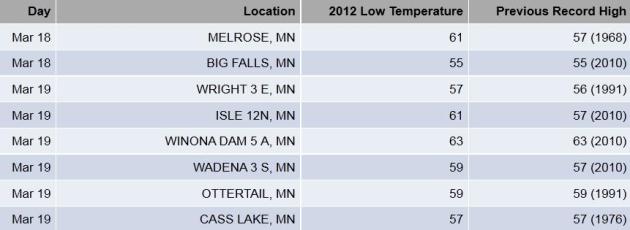

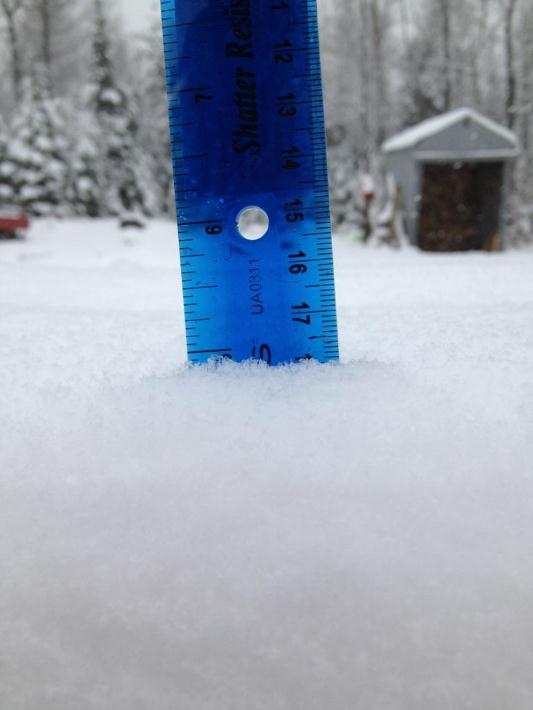
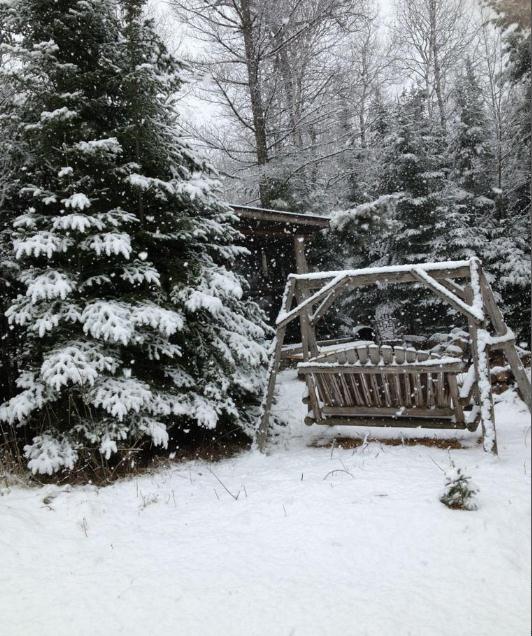
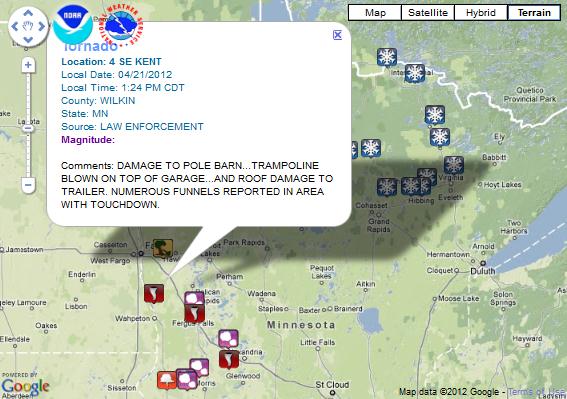







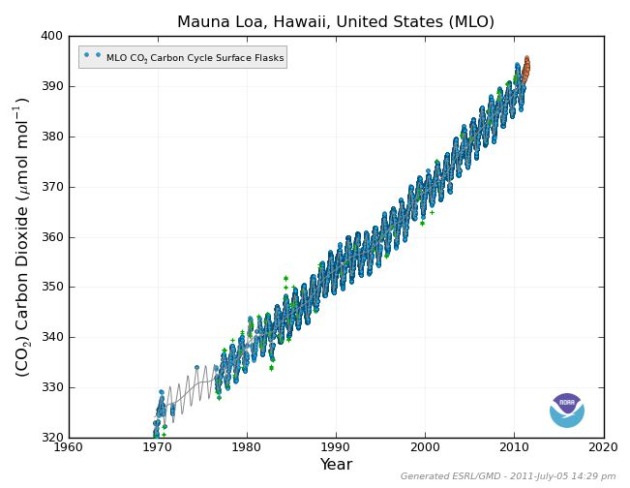
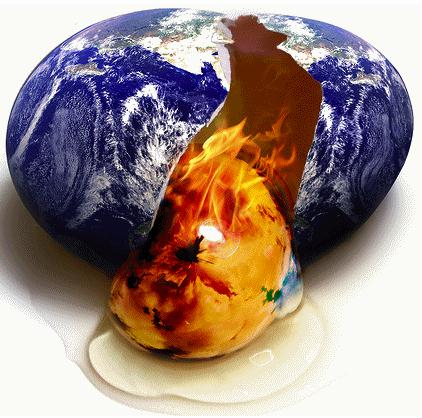
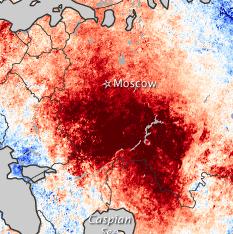

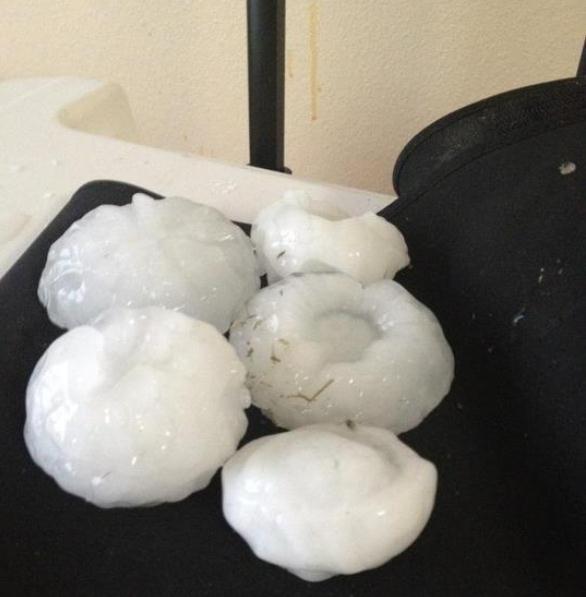
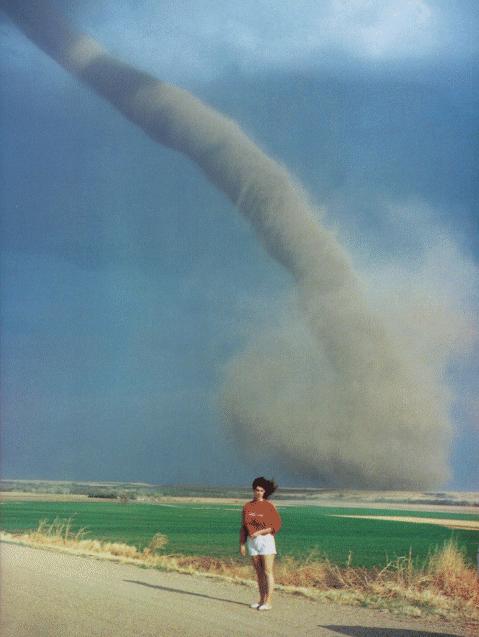

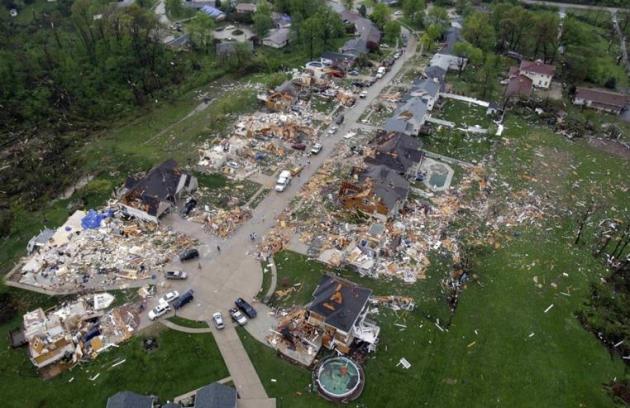
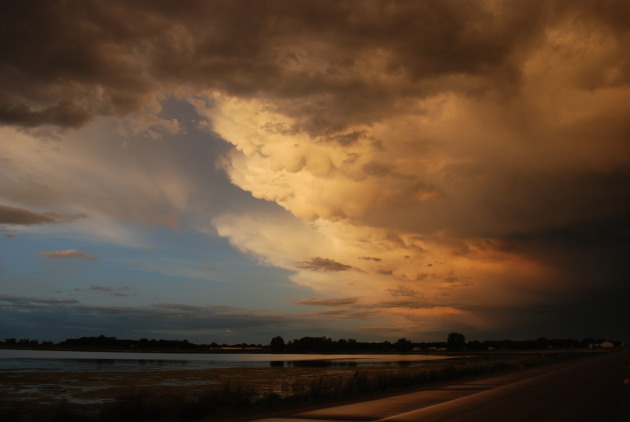

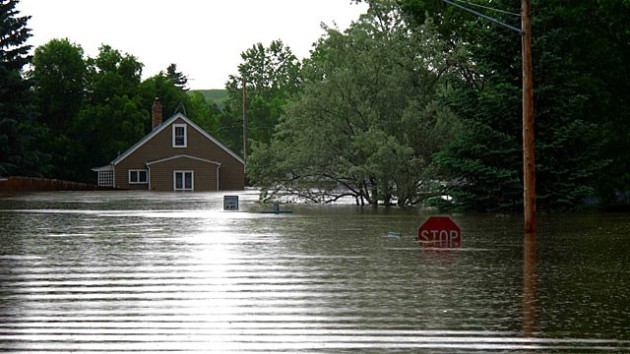


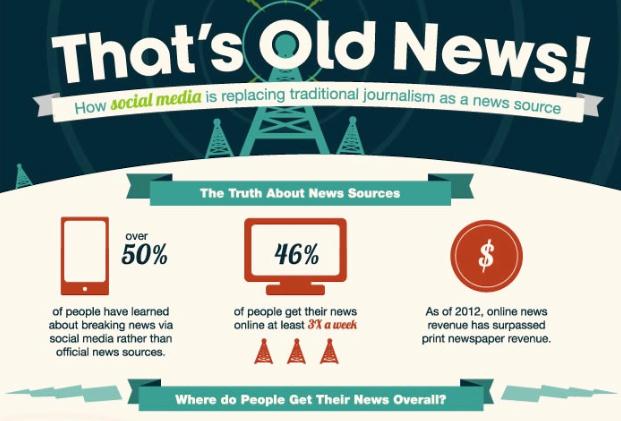




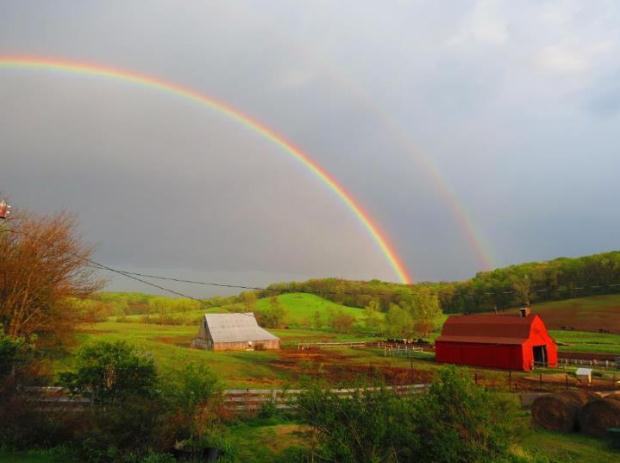

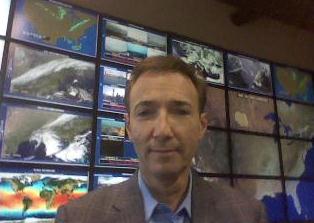




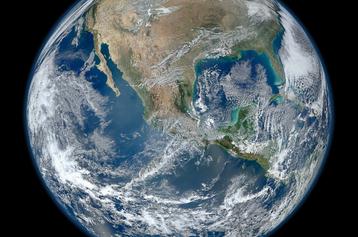




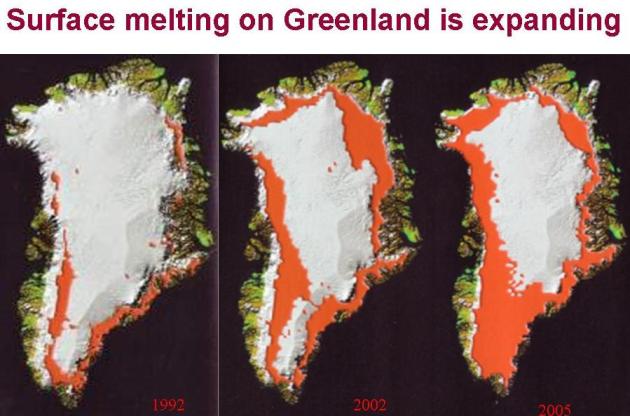


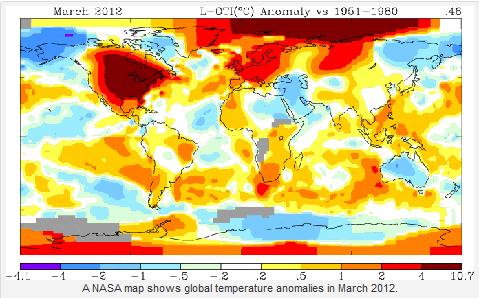
No comments:
Post a Comment